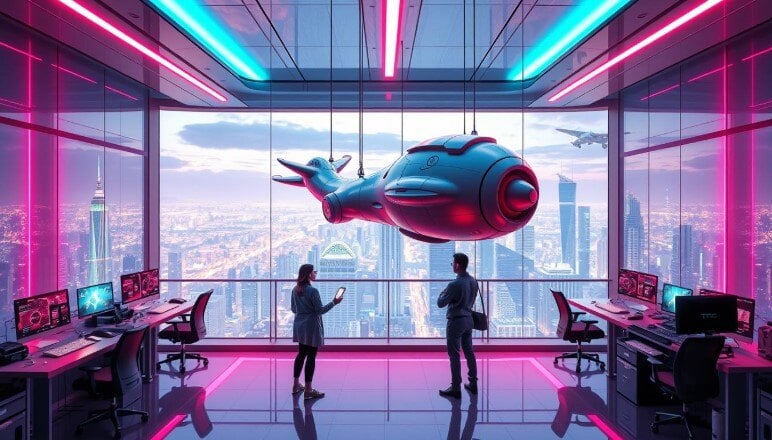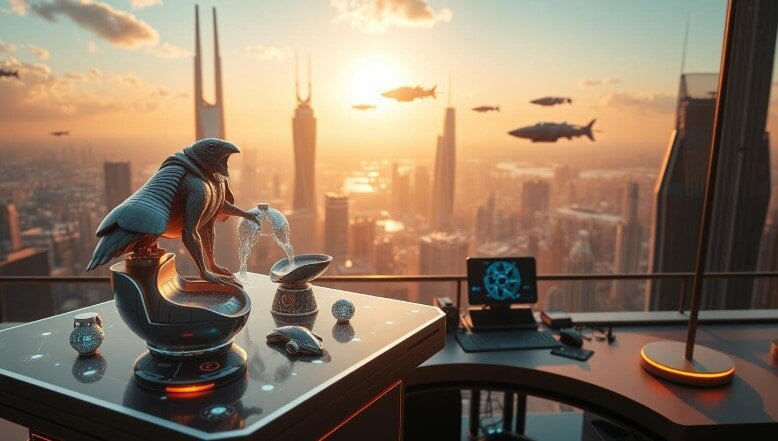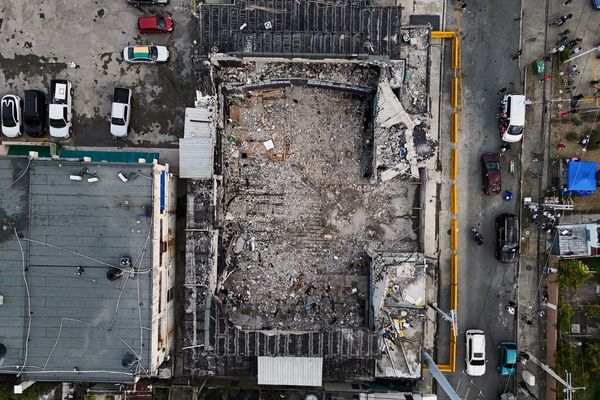
The world of digital animation is changing fast. 3D animation studios are exploring new ways to tell stories. They're making movies and games that pull you in like never before.
New trends are changing how we make digital animations. We're seeing more realistic and exciting visuals. These changes are making stories come alive in new ways.
Technology is leading to big changes in 3D animation. Things like AI, real-time rendering, and interactive design are making it easier to create amazing animations. This means we can see more complex and engaging stories.
Everyone is excited about what's happening in digital animation. The mix of technology and creativity is opening up new possibilities. We're on the verge of seeing even more amazing and immersive stories.
Evolution of 3D Animation Technology in the Digital Age

Digital animation has changed how we tell stories visually. Modern techniques have opened new doors for creativity and innovation. Today, advanced 3D animation tech makes visuals more realistic and detailed.
Rendering has gotten much better, allowing for detailed environments and characters. Thanks to fast GPUs, animators can now render scenes in real-time. This cuts down production time and boosts quality. Tools like Autodesk Maya and Blender are easier to use, helping artists create complex scenes.
Machine learning is now part of 3D animation, making tasks like character movement easier. This means studios can make better content faster. Motion capture tech has also improved, making digital characters seem more real.
Cloud computing has changed 3D animation by making it easier to work together. Animators can collaborate from anywhere, sharing resources and working on big projects without needing lots of hardware.
How AI is Revolutionizing 3D Animation Workflows
Artificial Intelligence is changing 3D animation, bringing new automated processes. These changes are making creative workflows more efficient. Machine learning is helping studios work faster and better.
AI tools now make complex character movements and expressions easier. They learn from many animations, getting better at mimicking human and character actions. This leads to more lifelike and engaging animations, saving a lot of time.
Advanced AI models can predict and create animation frames on their own. This cuts down on the manual work animators used to do. Now, they can focus on the creative aspects while AI handles the technical parts.
AI is also making character rigging faster and more accurate. It creates skeletal structures for characters, understanding how they move. This saves a lot of time, letting studios use their resources better.
AI in animation is not about replacing artists. It's about giving them smarter tools to create more. As technology gets better, we'll see even more amazing AI-driven animations that tell stories in new ways.
Virtual Reality and 3D Animation Integration
Virtual reality is changing the world of 3D animation. It offers new ways to tell stories and engage with audiences. With VR, viewers can dive into animated worlds like never before.
Immersive 3D experiences are changing how we tell stories through visuals. Animators use VR to create interactive scenes that react to user actions. This makes stories feel more real and personal.
But, making VR animations is still a big challenge. Creators need to make sure everything looks good and works smoothly. New software and techniques help solve these problems.
Big studios are spending a lot on VR animation. They see its power in making experiences that grab people's attention. This mix of advanced 3D and VR opens up new creative possibilities.
VR is making 3D animation do amazing things. From showing off buildings to creating game worlds, VR is pushing limits. As tech gets better, we'll see even more amazing experiences that mix the digital and real worlds.
Choosing the Right 3D Animation Studio for Your Project
Finding the right 3D animation studio is key to your project's success. Choosing the right studio involves looking at several important factors. These factors affect the quality and success of your final product.
Start by checking the studio's portfolio. A good portfolio shows the studio's skills and creativity. Look for variety in animation styles and technical skills that fit your project.
Good communication is essential. Choose a studio that talks clearly and keeps you updated. They should work closely with you to understand your vision.
Technical skills are also important. Check the studio's technology and software use. Studios with the latest tools like Maya and Blender can create top-quality animations.
Don't forget about the budget. Ask for a detailed quote and understand the pricing. While cost is important, quality and meeting your goals should come first.
Look at what others say about the studio. Check client testimonials and the studio's reputation. A studio with good reviews and a strong track record can help your project succeed.
Sustainable and Eco-friendly Animation Production
The animation world is changing for the better. Studios everywhere are focusing on sustainable 3D production. They're using eco-friendly techniques to make digital content without harming the planet.
Green animation is changing how we work. Studios now use energy-saving rendering processes. This cuts down on carbon emissions a lot.
Virtual production is a big step forward. It uses digital sets instead of real ones, saving materials and cutting down on emissions. Cloud-based tools also help teams work together without needing to be in the same place.
New software lets studios track their energy use. This way, they can make choices that are good for the planet. These tools help keep the environment in mind without sacrificing quality.
Some animation companies are leading the way. They show that you can be creative and care for the environment at the same time. They're setting new standards for the industry.
Mobile-First Animation Development
The digital world is moving fast towards mobile devices. This change is affecting how 3D animation studios make and share their work. Now, mobile 3D animation is key for catching people's eyes on phones and tablets.
Creating animations for smartphones needs special skills. Designers work hard to make sure animations look great and run well on smaller screens. They focus on making content that looks amazing and works smoothly on various devices.
There are big challenges in mobile 3D animation. These include making files smaller, simplifying animations, and adjusting visuals for smaller screens. To succeed, animators use smart graphics, adaptive resolutions, and efficient compression.
New tech like 5G networks is also changing mobile 3D animation. With faster internet, animators can send more complex animations to phones. This opens up new creative possibilities for them.
Now, studios are focusing on mobile-first design. They know that phones are where most people watch digital content. This means they need to rethink how they make animations to meet mobile users' needs.
Emerging Job Roles in 3D Animation Industry
The world of 3D animation is changing fast, opening up new chances for skilled people. With new tech, jobs that mix creativity with advanced skills are popping up.
Technical directors who know AI are key in today's animation studios. They connect old animation ways with new tech. They help make characters and scenes look more real.
Virtual reality animation experts are also in demand. They create experiences that take you into new worlds. Their work is seen in games, movies, and more, drawing in viewers.
Jobs that focus on green animation are becoming more important too. People who make animation that's good for the planet are needed. They aim to cut down on digital waste while keeping stories engaging.
Those starting in animation should keep learning. They need to mix art with tech skills. The future of 3D animation is about being flexible, creative, and open to new tech.
Blockchain Technology in Animation Distribution
Blockchain technology is changing how animation is shared. It gives 3D animation makers new ways to protect and make money from their work. NFT animation is a big step forward for artists to keep their rights safe and make unique digital items.
Blockchain platforms let creators turn their work into tokens, cutting out middlemen. Artists can now sell their animations as special, one-of-a-kind items. These tokens prove the animation's realness and show who owns it.
Blockchain does more than just help with sales. It lets creators get paid again when their work is sold again. This way, they get fair pay and find new ways to make money.
Creators can use special marketplaces to show and sell their animations worldwide. These places make it easy for artists to reach people all over, breaking down barriers. The blockchain's clear system builds trust between artists and their fans.
Even though there are still hurdles, blockchain is a big step forward for animation sharing. As the digital world keeps evolving, new ways like NFT animation will play a key role for creators.
Metaverse and 3D Animation Applications
The metaverse is a new frontier for 3D animation. Virtual world design has evolved from simple graphics to detailed, interactive 3D environments. These environments mix reality and digital experiences in new ways.
Creative studios are making immersive landscapes. These allow users to explore, interact, and engage in unique ways.
Metaverse animation needs advanced design techniques. Developers must create worlds that change with user actions. These environments require complex algorithms and advanced rendering to look real and feel seamless.
Big tech companies are investing in the metaverse. Virtual reality platforms are expanding what's possible in digital stories. Users can dive into rich, changing narratives that fit their own paths through virtual worlds.
3D animation teams are learning new skills for the metaverse. They need to know about real-time rendering, interactive character design, and procedural animation. These skills are key for creating engaging virtual experiences that draw in people worldwide.
Cross-Platform Animation Compatibility
The digital world needs smooth animation on all devices. Creators must make universal 3D assets that work well everywhere. This means animations should look great on phones and high-end computers alike.
Modern animation focuses on making assets that can be used anywhere. Developers use special techniques to make 3D models work on all screens. These models are made to scale, so they look good on any device.
Getting animations to work on different devices is key. Tools like compression and special rendering help keep the look consistent. Animation pros use advanced software to move assets easily between devices.
Planning is vital for animations that work on all platforms. Studios use strong pipeline tech for consistent delivery. This way, animations look the same on any device.
The future of 3D animation is about breaking through device limits. As tech gets better, making animations that work on all devices will be even more important. Studios want to share great content with more people.
Gaming Industry's Influence on 3D Animation
The gaming world has changed 3D animation with new techniques. These techniques push what's possible in animation. Video game development is now a leader in innovation, improving technology in digital media.
Real-time rendering is a big step forward, thanks to game developers. It lets visuals be processed instantly, making games feel more real. This technology makes games feel like you're right in the action.
Now, animation from games is changing other fields too. Filmmakers and advertisers are using game design to make their stories better. Tools like motion capture and procedural animation, once just for games, are now used in professional animation.
Animators see game development as a place to learn and grow. The need for animation that moves and responds is growing. Game design is always pushing technology to new heights, setting new standards for digital visuals.
Game animation has changed how we see and make animated content. It's brought realistic character movements and detailed environmental interactions to digital platforms.
Conclusion
The world of 3D animation is changing fast. New technologies like artificial intelligence and virtual reality are changing how we create and tell stories. These advancements are making animation more exciting and interactive.
As we look ahead, we see technology and art coming together in amazing ways. Animation studios are now making experiences that feel real and personal. They're using new tools to reach more people than ever before.
Now, making animation in a way that's good for the planet is key. Studios are using green methods and making sure their work works on many platforms. With AI getting better, we'll soon see animations that are even more lifelike and engaging.
The future of animation looks bright and full of possibilities. Those who keep up with new tech will lead the way. The next ten years will bring big chances for creativity and innovation in 3D animation.







